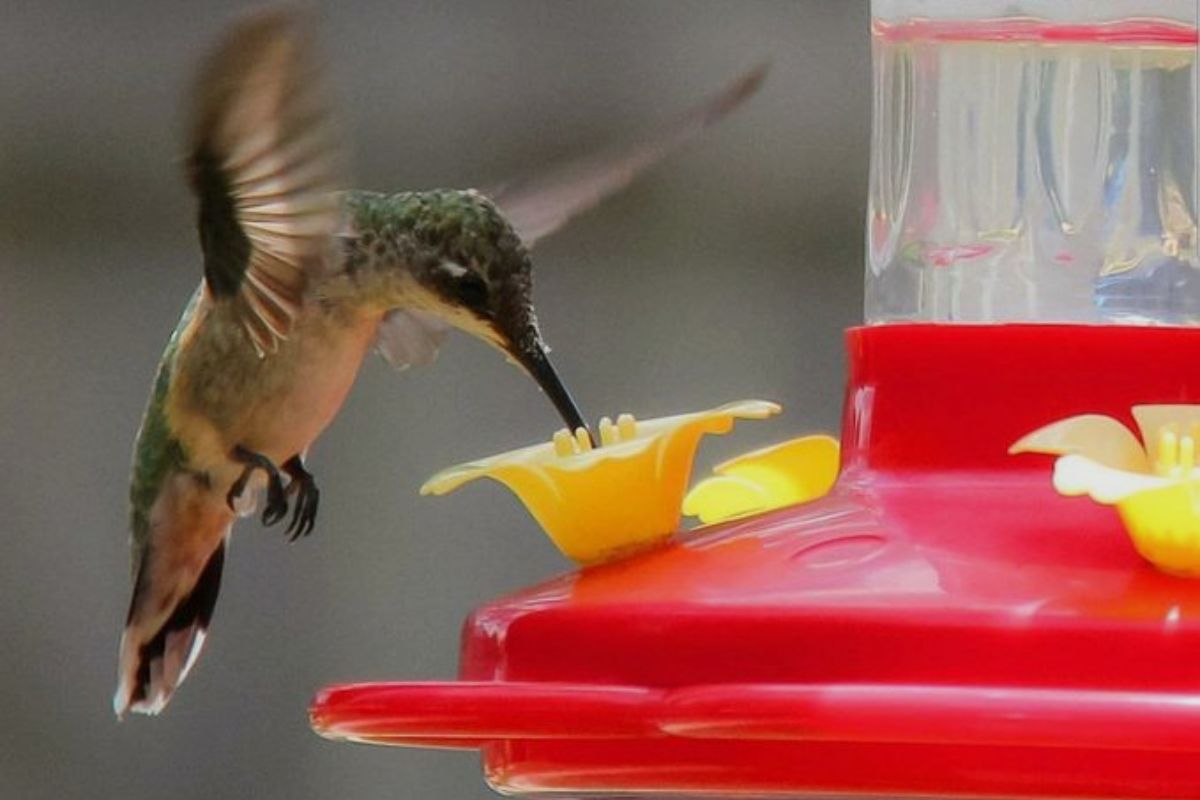As birdwatchers and nature enthusiasts, it is our top priority to ensure the health and happiness of hummingbirds. One crucial step in achieving this is maintaining a clean and properly filled hummingbird feeder, which serves as their primary food source.
The frequency of changing the sugar water in your hummingbird feeders depends on various factors, including temperature, bird activity, and recent rainfall in your area. It is generally recommended to change the solution every 3-4 days during warm weather months, or more frequently if necessary. In colder months with cold winters, changing it once a week is sufficient. However, if you notice any signs of mold or contamination before the recommended time frame, it is crucial to change the solution immediately to ensure the safety of the birds.
Understanding Hummingbird Feeders
A hummingbird feeder is an essential tool for attracting and observing hummingbirds in your garden or backyard. Typically made of red plastic, it consists of two parts: a bottom reservoir for holding the sugar water and an upper bucket serving as a landing platform for the birds. A tube, made of metal or plastic, connects the bottom reservoir to the top, allowing the sugar water to flow up into the bucket. The bucket also features small ports for the birds to drink from. As the hummingbirds drink, oxygen from the outside air mixes with the sugar water, keeping it fresh and safe for consumption.
How Much Sugar Water Should You Put in a Hummingbird Feeder?
The amount of sugar water to put in a hummingbird feeder depends on its size. As a general guideline, it is recommended to fill each feeder with 16 ounces (equivalent to 2 cups) of sugar water at least once a day. To prepare the sugar water solution, mix 4 parts warm water with 1 part white granulated sugar (regular table sugar). Avoid using honey or other sweeteners, as they can be harmful to hummingbirds over time. Also, refrain from adding artificial coloring or red dye, as these can be dangerous to birds and other wildlife in your area.
Proper Cleaning Steps for Hummingbird Feeders
To ensure optimal nutrition and safety for your hummingbirds, it is important to clean both parts of your feeders at least once a month, or more frequently if needed. For the top portion of the feeder, use mild unscented dish soap and warm water. Rinse thoroughly with cool running water before refilling with fresh sugar water. For cleaning the bottom reservoir, empty any remaining solution and fill it halfway with warm soapy water. Let it sit for 20 minutes, then rinse with cool running water until all soap is removed from both the inside and outside surfaces of the feeder. Refill with fresh solution.
Ensuring Proper Nutrition for Your Hummingbirds
In addition to providing fresh sugar water, there are other steps you can take to ensure your hummingbirds receive the necessary nutrition:
- Avoid using artificial sweeteners or red dyes when preparing sugar solution.
- Clean your feeders regularly to prevent the growth of bacteria, mold, and other contaminants.
- Offer additional sources of nutrition, such as insects, berries, and flower nectar, alongside sugar water.
- Monitor the amount of sugar water provided to ensure it doesn’t exceed the recommended daily intake.
Conclusion
Keeping your hummingbirds healthy and happy is a priority for birdwatchers. By understanding when to change the sugar water in your feeders and following the cleaning and nutrition tips provided, you can ensure your feathered friends thrive in their environment.
